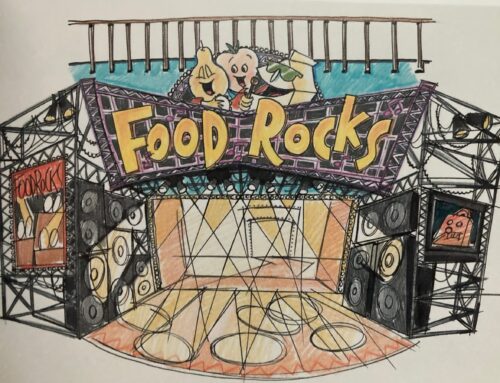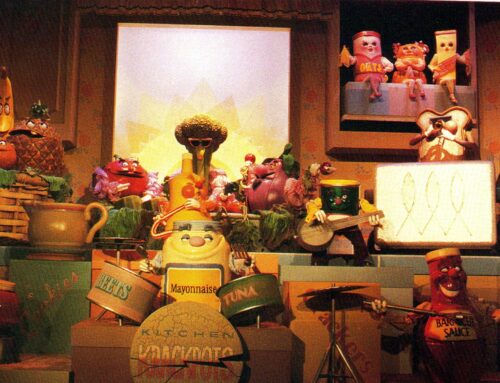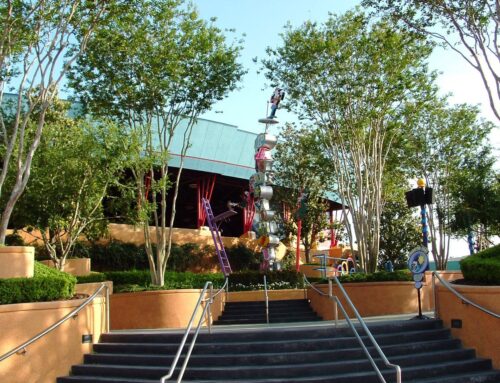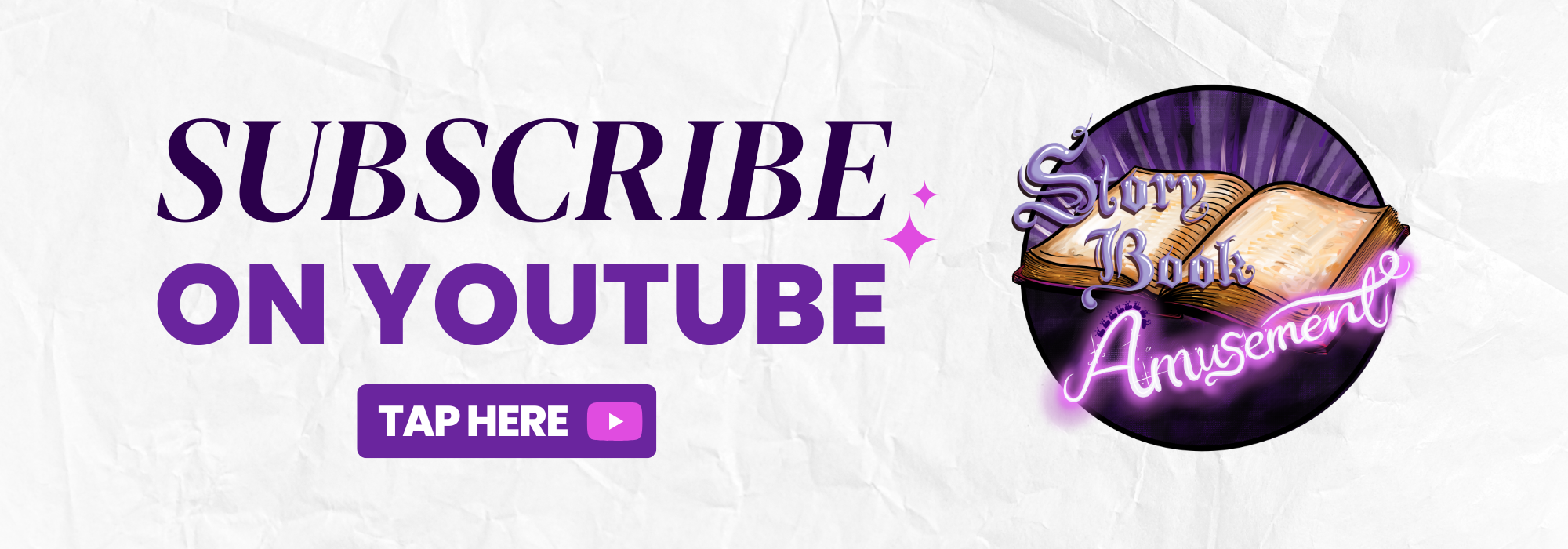Adventure Waits in an Unlikely Location
Some theme parks can be found in the most surprising places around the world.
We’ve heard of parks buried among the lush Dutch woods. We’ve heard of parks built along a retired quarry wall. But a special theme park can be found in an especially unlikely spot: the sprawling fields of Northeast Iowa.
Lost Island Themepark sprouted in the U.S. Corn Belt and is a beautiful destination that’s equally easygoing and thrilling. Despite being in what most would consider the middle of nowhere, the young park is blossoming with completely original theming and storytelling. Lost Island is an unlikely gem in the Midwest, and its remarkable story is a roller coaster in itself.
How did a theme park end up there? Is it on par with world-class theme parks?
This is the challenging story and unique joy of Lost Island Themepark.
Watch on YouTube
This article is available in video form with added visuals. Click HERE to watch it.
Lost Island Emerges
Before the turn of the millennium, residents of Waterloo, Iowa, were a half-day’s drive away from a good family outing. The Bertch family, owners of a local cabinet manufacturer, wanted to change that. They had a seedling of an idea and were motivated to give back to the community by building a homegrown attraction.
The well-respected cabinet company was known for treating hundreds of its employees to all-expenses-paid vacations. The Bertches’ upcoming attraction would create that same type of getaway for the Cedar Valley area; it would be the same quality as a vacation destination, but not a world away.
The Bertches would find their inspiration in the mid-‘90s during a trip to Wisconsin Dells. They decided to build a brand-new water park. Since the Bertches loved tropical vacations, they’d give their upcoming water park an island theme. The city of Waterloo, Iowa—having more than 60,000 residents—would get its own slice of paradise.
Lost Island Waterpark was officially in development, and construction began in 1999.
BDR Design Group joined the project, adding a level of creativity and theming to the water park; that creative touch set Lost Island apart from others. The Bertches wanted to exceed everyone’s expectations by following a four-to-one guideline; that meant, for every dollar they spent on an attraction, they invested four times that cost into theming.
The project exceeded its expected $6 million estimated cost as crews worked long hours in preparation for opening day. Despite weather setbacks and other challenges, the process was worthwhile as Lost Island’s co-developer Gary Bertch said they “wanted to do it right.”
By summer 2001, Lost Island Waterpark opened its gates to the public.
New Waves in Waterloo
The beautiful 40-acre water park had a bit of a slippery opening season, with low attendance and criticism of its high admission prices. However, visitors would soon discover Lost Island was more than some local swimming pool. The attraction lineup—including a wave pool, lazy river, 60-foot plunge, and more—made for a lovely time. Guests really took a liking to the refreshing and well-themed environment, like a mini vacation right in their backyard.
Over the years, the word got out about Lost Island Waterpark. Attendance improved, and it was often rated among the top water parks in the U.S.
After a slow start, Lost Island Waterpark was finally making a splash, and the Bertch family was looking ahead to making new waves.
Expanding Lost Island
Lost Island Waterpark’s eventual success led to steady numbers, but the Bertches wanted to expand the park to continue their growth. They considered building an accompanying indoor water park, but those plans evaporated during the financial crisis of the late-2000s. Despite that, the Bertches stayed optimistic about an anticipated expansion.
The Bertches in the meantime continued making connections in the themed entertainment industry. One manufacturer with a proven track record really caught their attention: Sally Dark Rides. Some of their work included the top-notch Challenge of Tutankhamon at Walibi Belgium.
Sally Dark Rides developed a stock dark ride concept called Forbidden Island, available for any theme park to purchase. The folks at Lost Island were immediately interested. Even though Lost Island wasn’t quite ready to expand yet, they saw this ride as a good fit for them down the line. This unbuilt ride’s volcanic finale would spark a future attraction.
Lost Island Waterpark never lost their dream of expanding. In the 2010s, they harvested ideas for a dry park. While Lost Island knew how to create a relaxing water park, they soon discovered the challenges of developing a fast-paced theme park.
Entering a New Realm
A potential Lost Island theme park would not have the budget for a full roster of record-breaking coasters to compete with other regional parks. Instead, Lost Island stuck to what they knew best: theming. All that in mind, Lost Island’s possible theme park needed next-level storytelling to make it a full-day park.
The question was: What would that story be?
Many top theme parks use intellectual properties, like movies or TV shows, as a theme. Lost Island, with concerns about using IPs, instead formed their own path. The Bertches would create a completely original story by extending the water park’s tropical theme, but it had to be better than ever. One of their early concepts was themed to the islands around the world. They then looked into the legends of real lost worlds, such as Atlantis and the mythical lost continent, Mu. When researching, however, they didn’t think that was the right choice for their family-friendly park.
They eventually settled on a broader theme, one that would inspire stories of fantasy: the four elements of nature. With a unique take on this, the Bertches created a dense backstory to use as the basis for their new theme park. In 2016, they officially moved forward developing the newest Lost Island experience. After selling the family’s longtime, successful cabinet business, the Bertches were all in.
Lost Island once again contracted BDR Design Group to bring their vision to life. With a team of collaborators on board, the imaginative, far away world was closer now more than ever.
Construction for the $100 million theme park began in 2019. While the future was bright, the process wouldn’t be without its challenges. The economic impact of 2020, rising costs, supply shortages, a small fire in an attraction, the Midwest’s harsh weather, and other complications made development an uphill battle. However, the force and passion of 400 workers made the self-funded project possible.
The theme park was three times the scope of Lost Island’s water park. It was like building a city, but really, they were creating a whole new world of discovery.
The team pushed through with uncertainty on the horizon, but the job was worthwhile. Contractors were hurried off site as the new theme park prepared to open its gates. Adventure awaits.
A Woeful Opening, a Hopeful Park
Lost Island Themepark’s opening day—June 18, 2022—came with much excitement and much disappointment. The vibrant, 90-acre park was as beautiful as expected, but not all went as planned. Crowds were light, and unfortunately, so was the park’s ride lineup.
Throughout its inaugural season, Lost Island Themepark averaged just over 400 visitors per day, totaling in 27,000 guests for the entire season. That number was a tenth of what management expected, and only about a third of the water park’s attendance.
The reason for this low turnout may be due to some major attractions being closed throughout the park’s entire opening year. The headlining launched coaster never opened in 2022 due to a holdup in available mechanical parts. The big water ride was postponed after a fire during construction.
Lost Island’s disappointing debut season was cut short; it was a difficult decision, but the best decision under the circumstances. The theme park operated for only 65 days and ran at a seven-figure loss.
For all that, the attendance and ride delay issues were not a reflection of the park’s quality and potential. Even though Lost Island needed more time in the oven, visitors still got a taste of what was to come.
Lost Island Finds Second Wind
Lost Island’s sophomore year was much more promising. In 2023, the park’s attendance nearly doubled, and the roster of attractions had more to offer. As the park saw more success, more visitors got to see the adventures awaiting inside.





